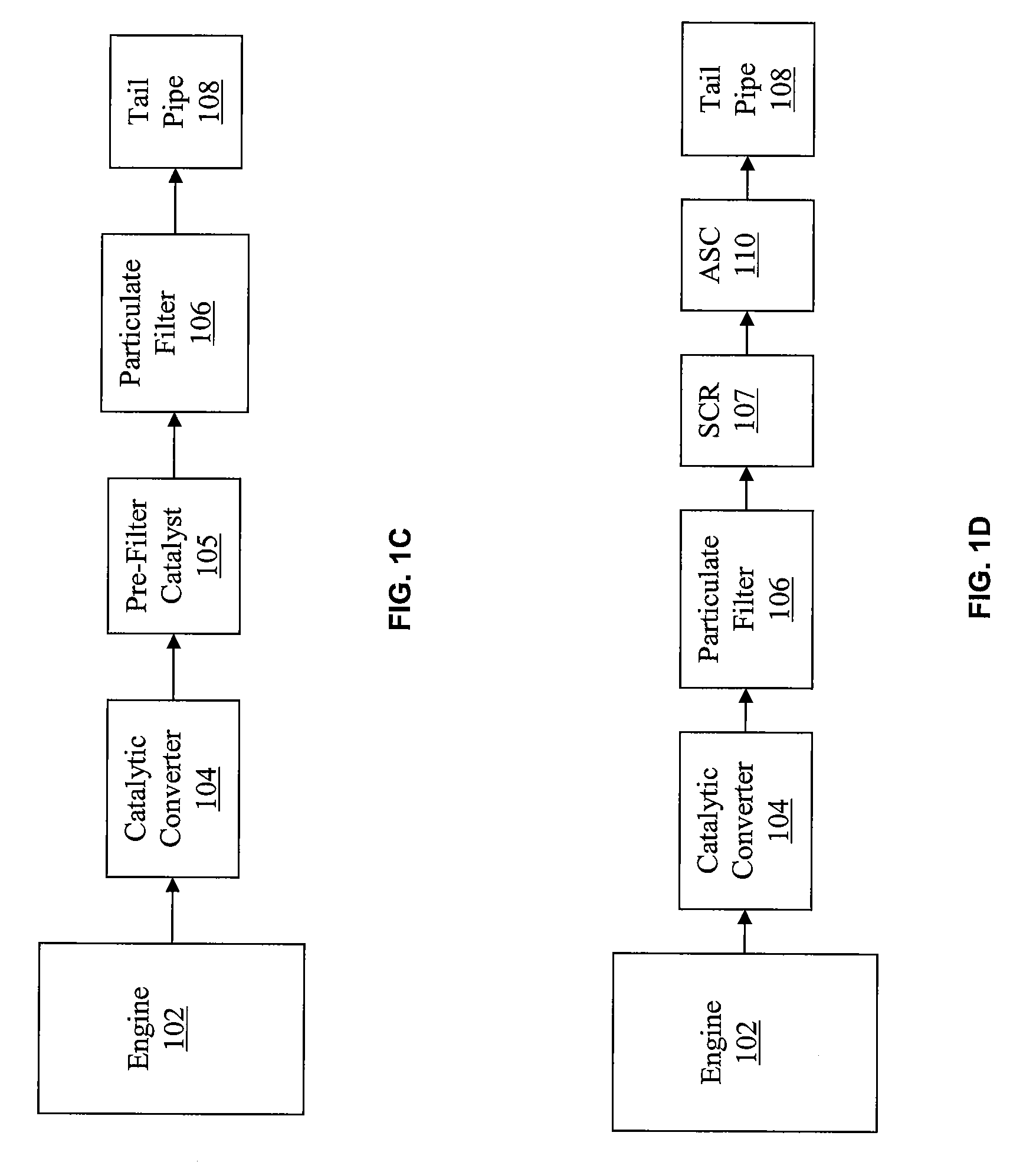Engine exhaust catalysts containing palladium-gold
a technology of engine exhaust and catalyst, which is applied in the field of supported catalysts, can solve the problems of not being supported by experimental data, based on mathematical models, and many industrial products such as fuels, lubricants, etc., and achieves the effect of reducing the inhibition effect of hc, reducing the co emissions of vehicles, and boosting the oxidation activity of engine exhaust catalysts to effective levels
- Summary
- Abstract
- Description
- Claims
- Application Information
AI Technical Summary
Benefits of technology
Problems solved by technology
Method used
Image
Examples
example 1
Benchmark Pt / Pd at 120 g / ft3
[0055]The supported PtPd catalyst powder (2.0% Pt, 1.0% Pd) prepared above was made into a washcoat slurry via addition to de-ionized water, milling to an appropriate particle size (typically with a d50 range from 3 to 7 μm), and pH adjustment to give an appropriate viscosity for washcoating. According to methods known in the art, the washcoat slurry was coated onto a round cordierite monolith (Corning, 400 cpsi, 5.66 inches×2.5 inches), dried at 120° C. and calcined at 500° C. to give the final coated monolith with a precious metal (Pt+Pd) loading of 120 g / ft3. The coated monolith was canned according to methods known in the art and tested using a certified testing facility on a light-duty diesel vehicle, as described above.
example 2
Mixture of Pt (at 60 g / ft3) and PdAu (at 73 g / ft3)
[0056]The supported Pt catalyst powder (3.0% Pt) and the supported PdAu catalyst powder (1.67% Pd, 2.0% Au) prepared via the methods described above were physically mixed and made into a washcoat slurry via addition to de-ionized water, milling to an appropriate particle size (typically with a d50 range from 3 to 7 μm), and pH adjustment to give an appropriate viscosity for washcoating. According to methods known in the art, the washcoat slurry was coated onto a round cordierite monolith (Corning, 400 cpsi, 5.66 inches×2.5 inches), dried at 120° C. and calcined at 500° C. to give the final coated monolith with precious metal loadings of 60 g / ft3 Pt and 73 g / ft3 PdAu (total precious metal loading of 133 g / ft3). The coated monolith was canned according to methods known in the art and tested using a certified testing facility on a light-duty diesel vehicle, as described above. Note that the precious metal cost of this coated monolith is...
example 3
Mixture of PtPd (at 85 g / ft3) and PdAu (at 73 g / ft3)
[0057]The supported PtPd catalyst powder (2.8% Pt, 1.4% Pd) and the supported PdAu catalyst powder (1.67% Pd, 2.0% Au) prepared via the methods described above were physically mixed and made into a washcoat slurry via addition to de-ionized water, milling to an appropriate particle size (typically with a d50 range from 3 to 7 μm), and pH adjustment to give an appropriate viscosity for washcoating. According to methods known in the art, the washcoat slurry was coated onto a round cordierite monolith (Corning, 400 cpsi, 5.66 inches×2.5 inches), dried at 120° C. and calcined at 500° C. to give the final coated monolith with precious metal loadings of 85 g / ft3 PtPd and 73 g / ft3 PdAu (total precious metal loading of 158 g / ft3). The coated monolith was canned according to methods known in the art and tested using a certified testing facility on a light-duty diesel vehicle, as described above. Note that the precious metal cost of this coa...
PUM
| Property | Measurement | Unit |
|---|---|---|
| size | aaaaa | aaaaa |
| size | aaaaa | aaaaa |
| diameter | aaaaa | aaaaa |
Abstract
Description
Claims
Application Information
 Login to View More
Login to View More - R&D
- Intellectual Property
- Life Sciences
- Materials
- Tech Scout
- Unparalleled Data Quality
- Higher Quality Content
- 60% Fewer Hallucinations
Browse by: Latest US Patents, China's latest patents, Technical Efficacy Thesaurus, Application Domain, Technology Topic, Popular Technical Reports.
© 2025 PatSnap. All rights reserved.Legal|Privacy policy|Modern Slavery Act Transparency Statement|Sitemap|About US| Contact US: help@patsnap.com



